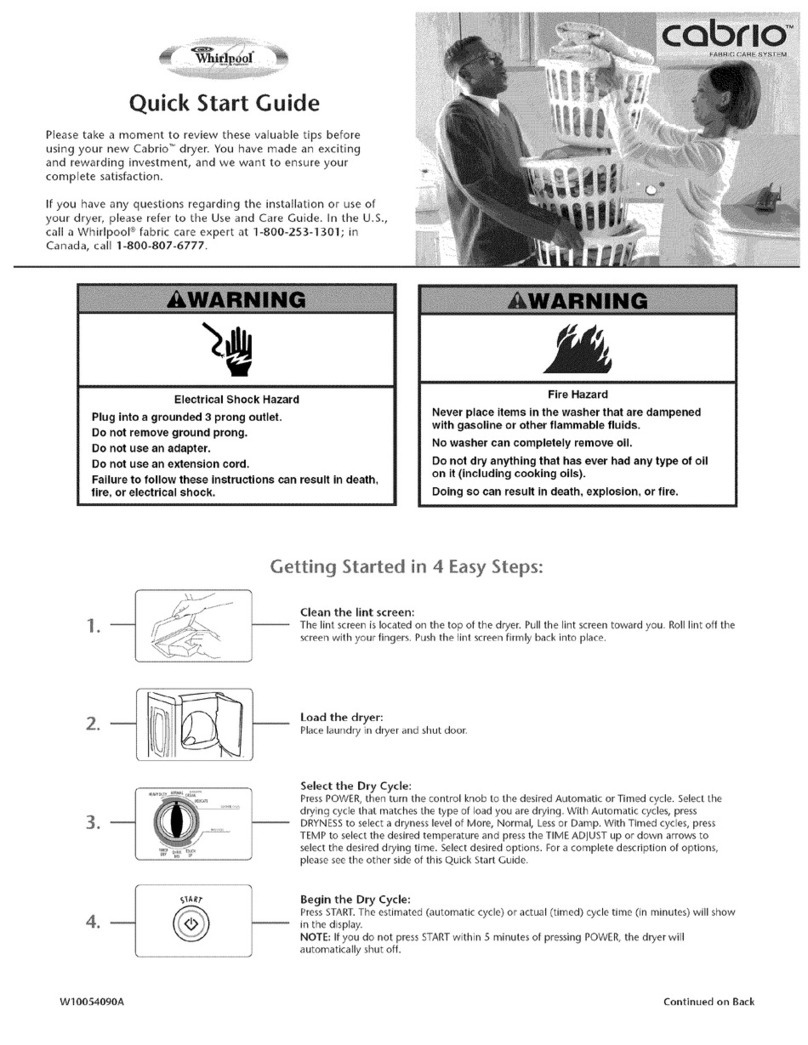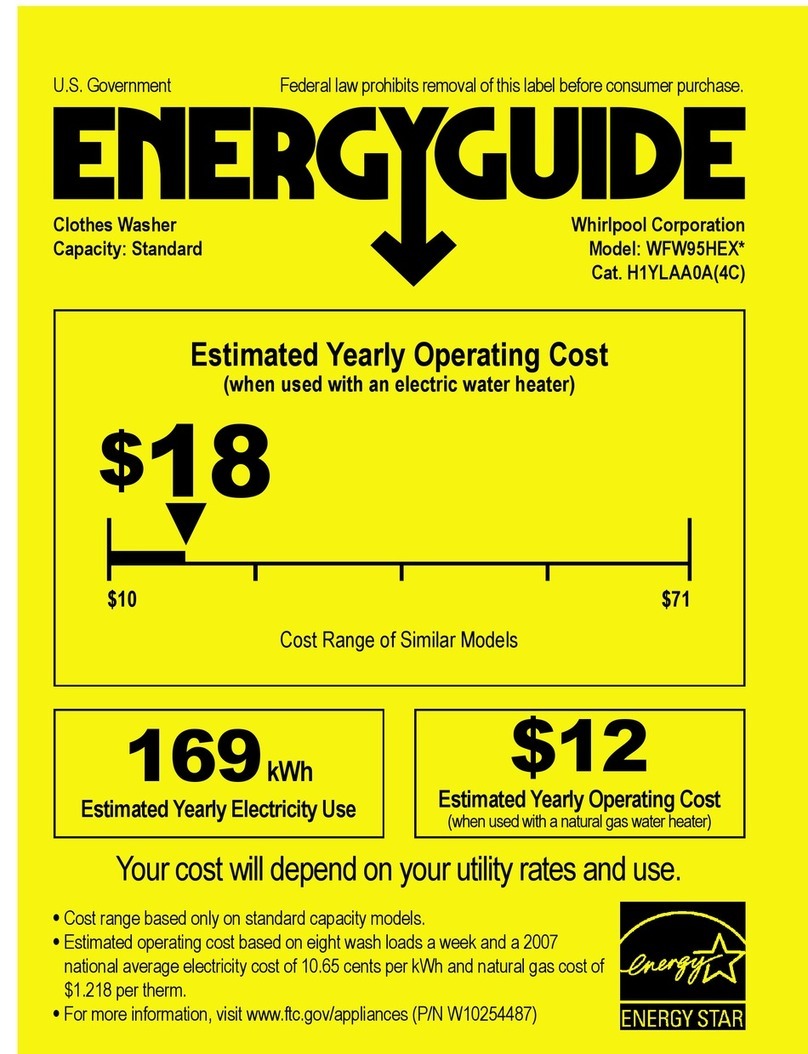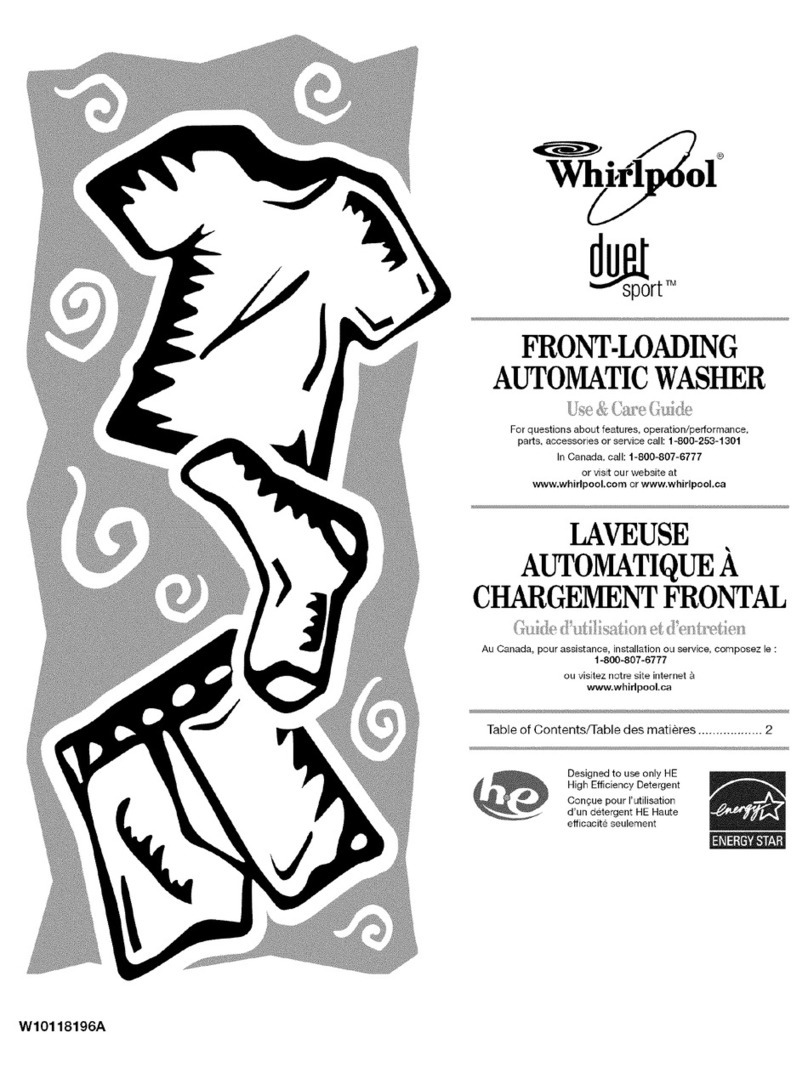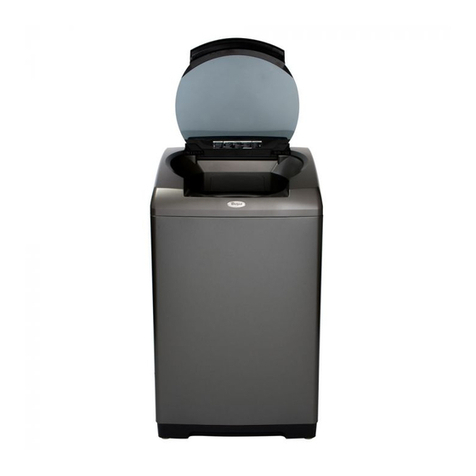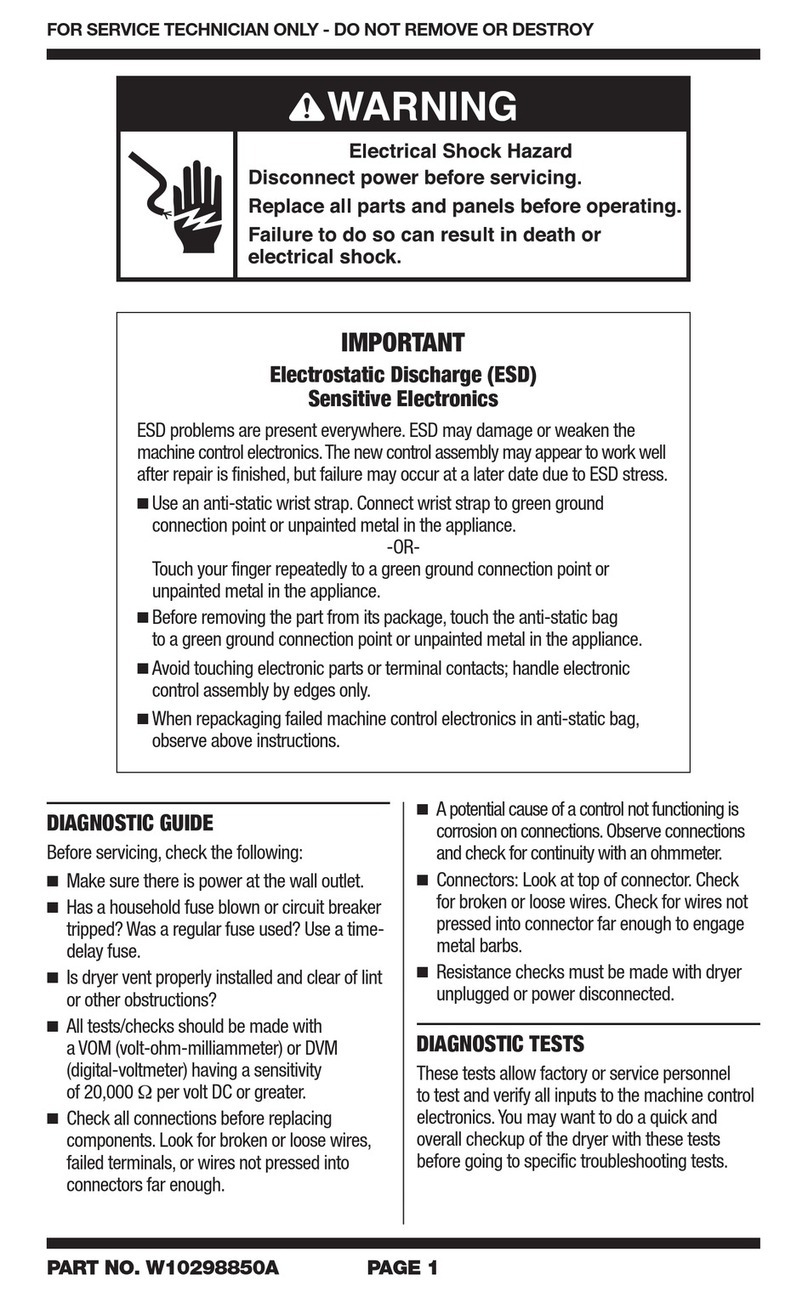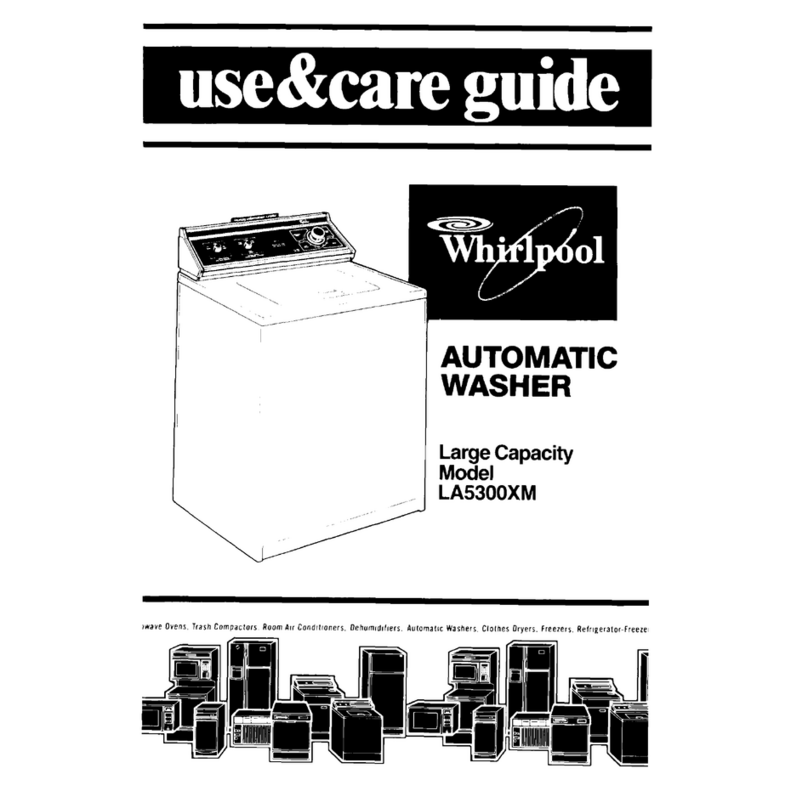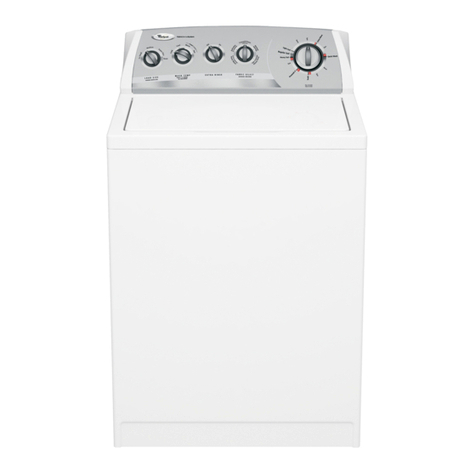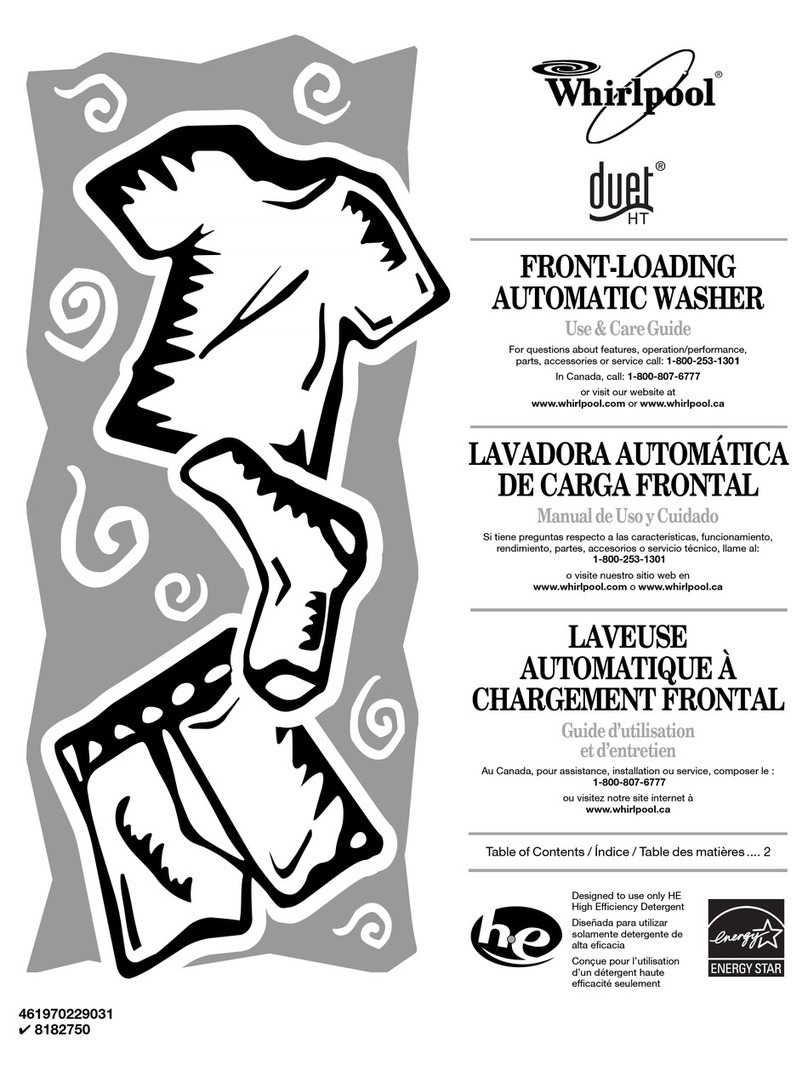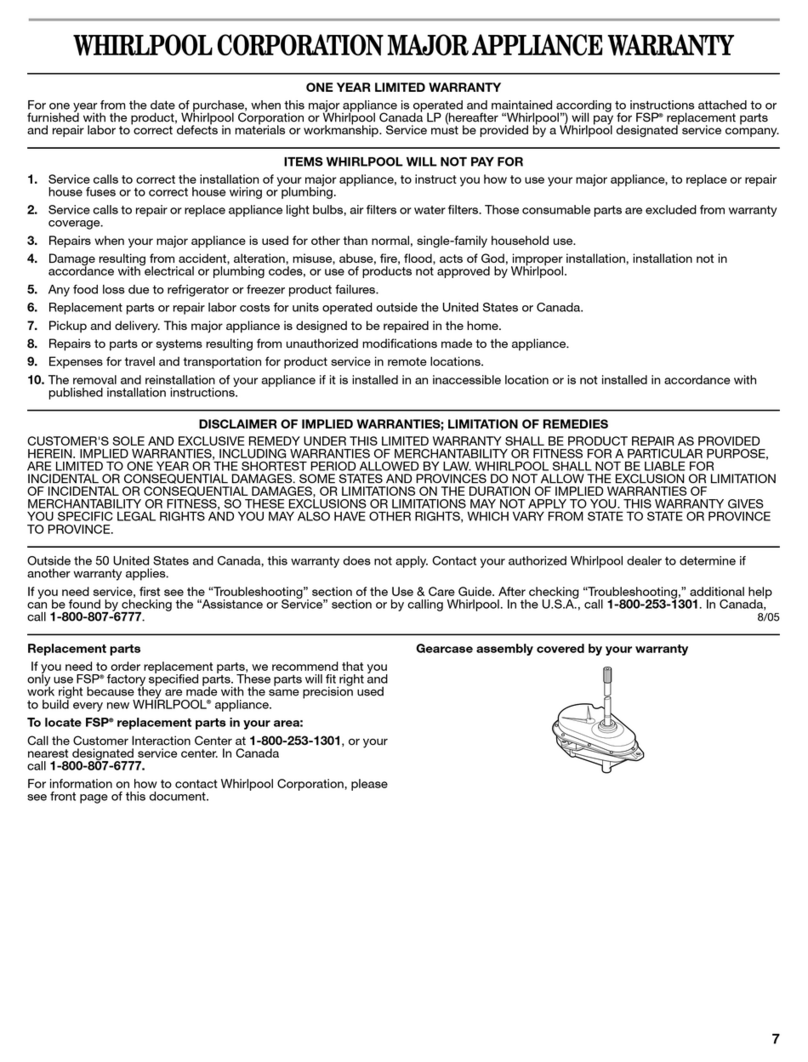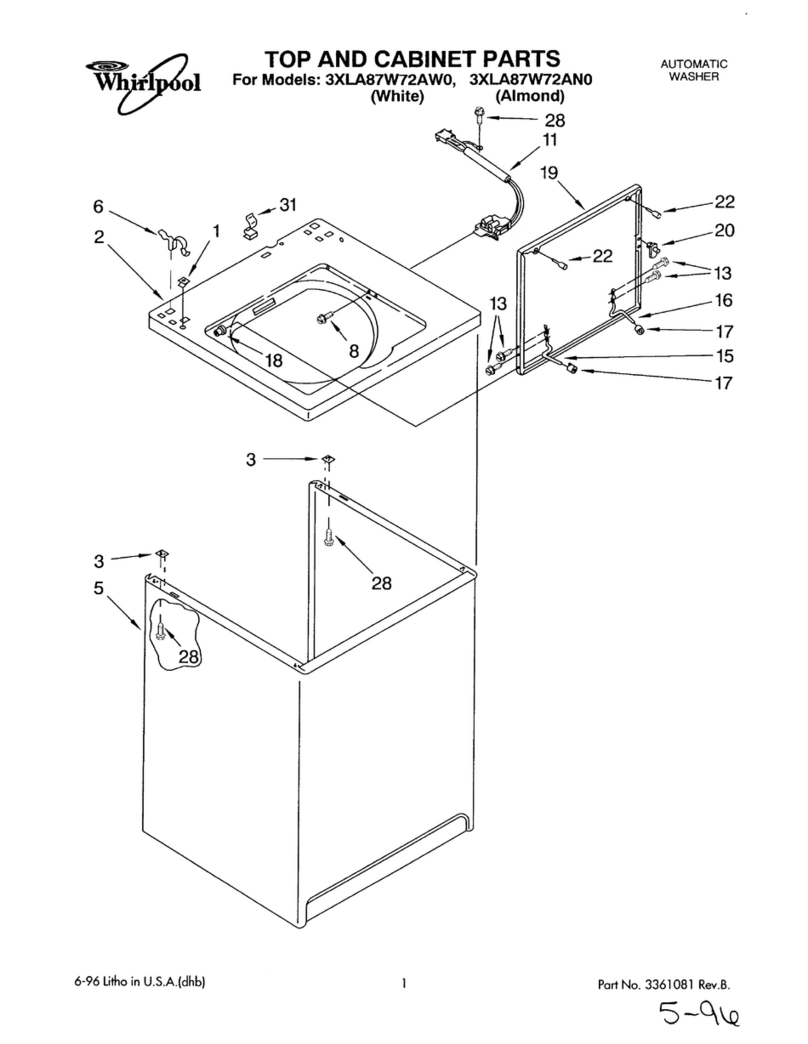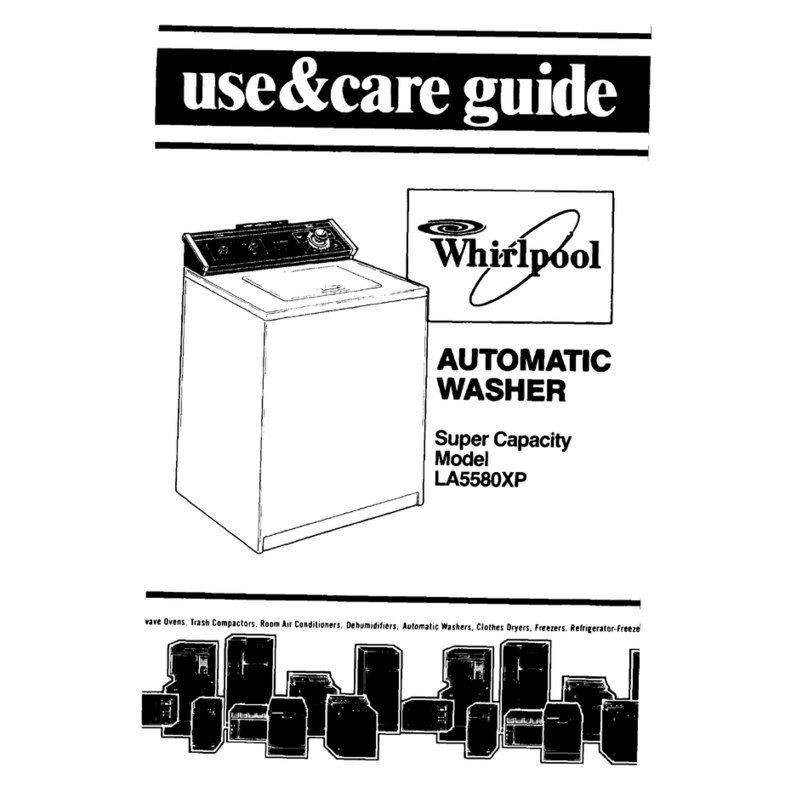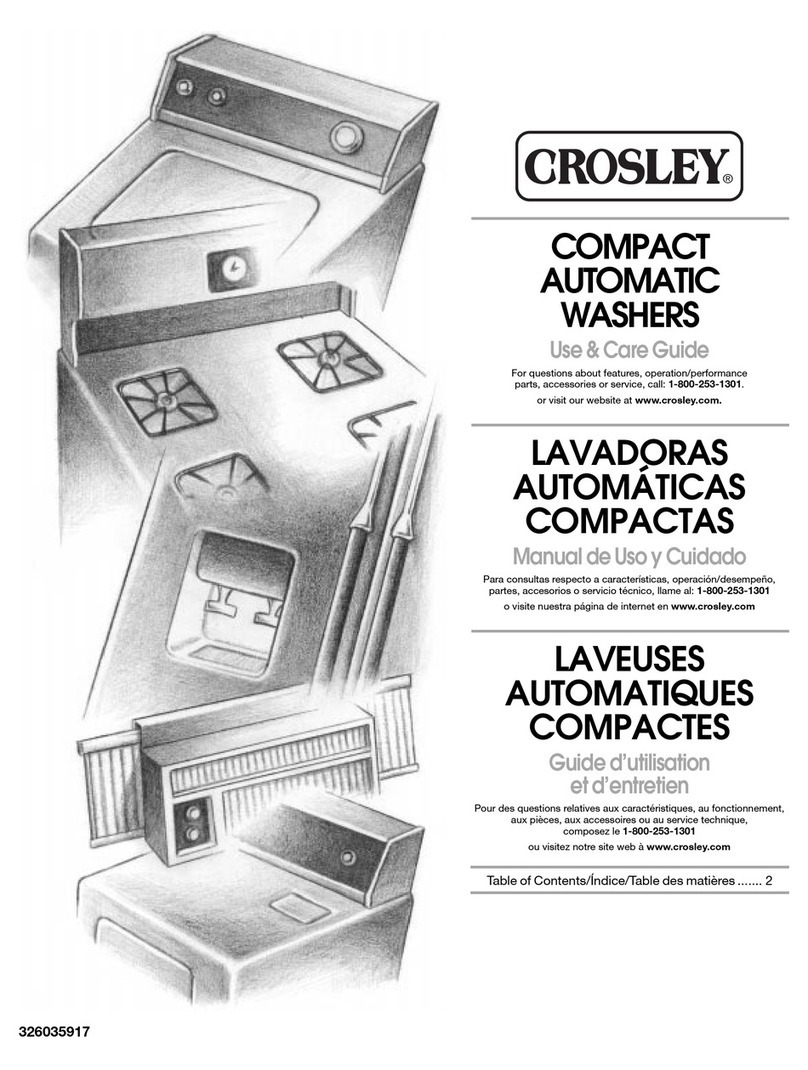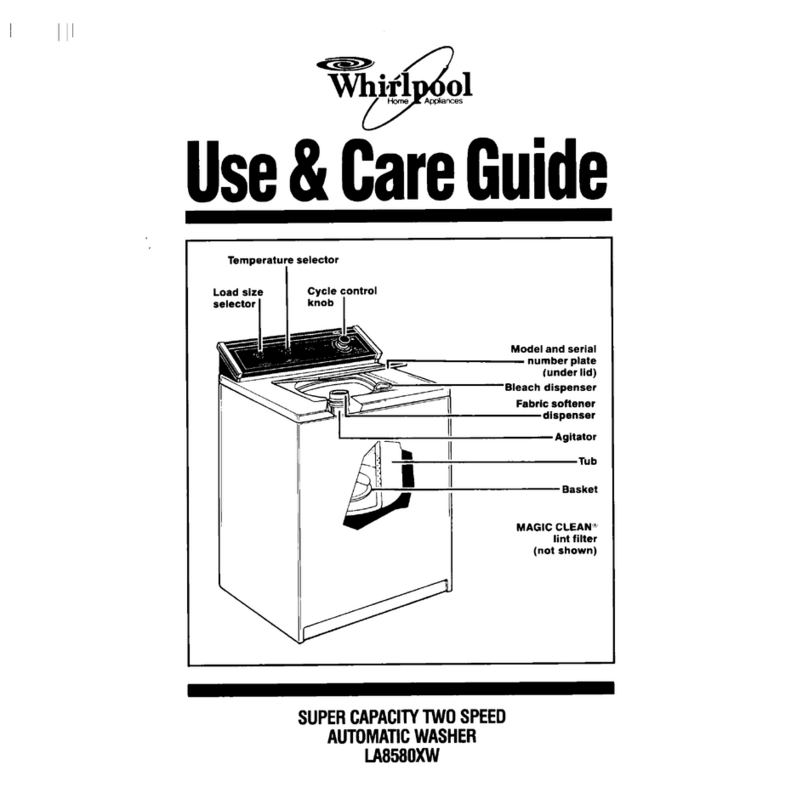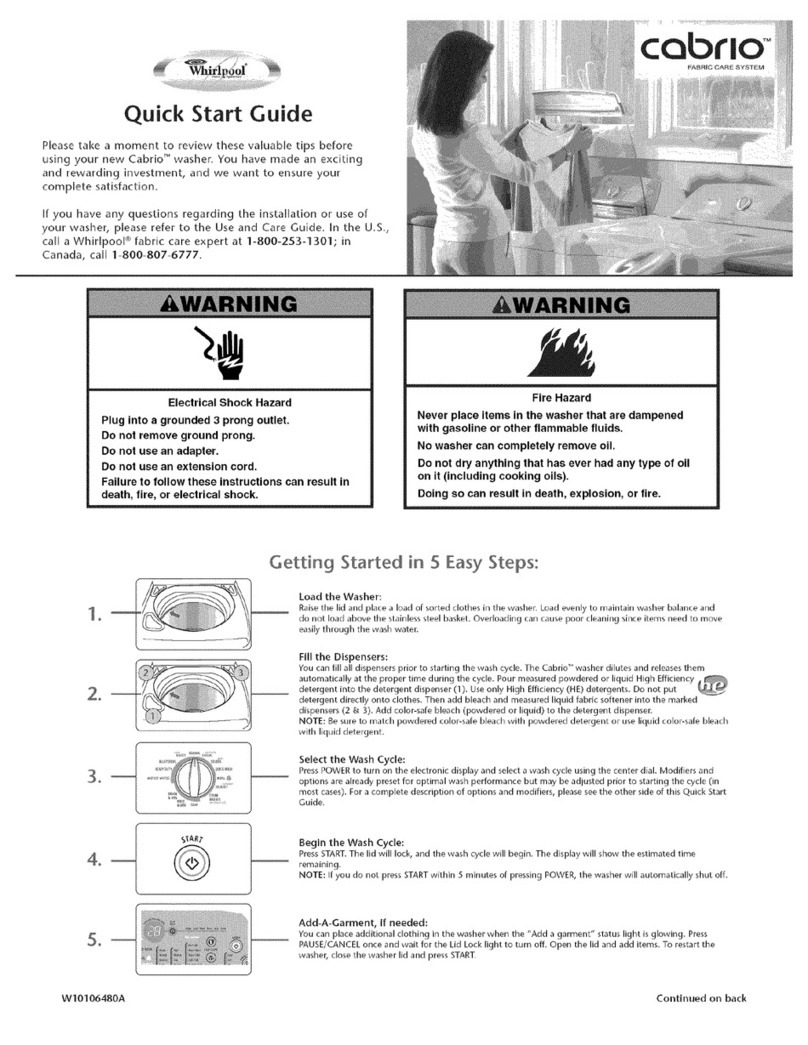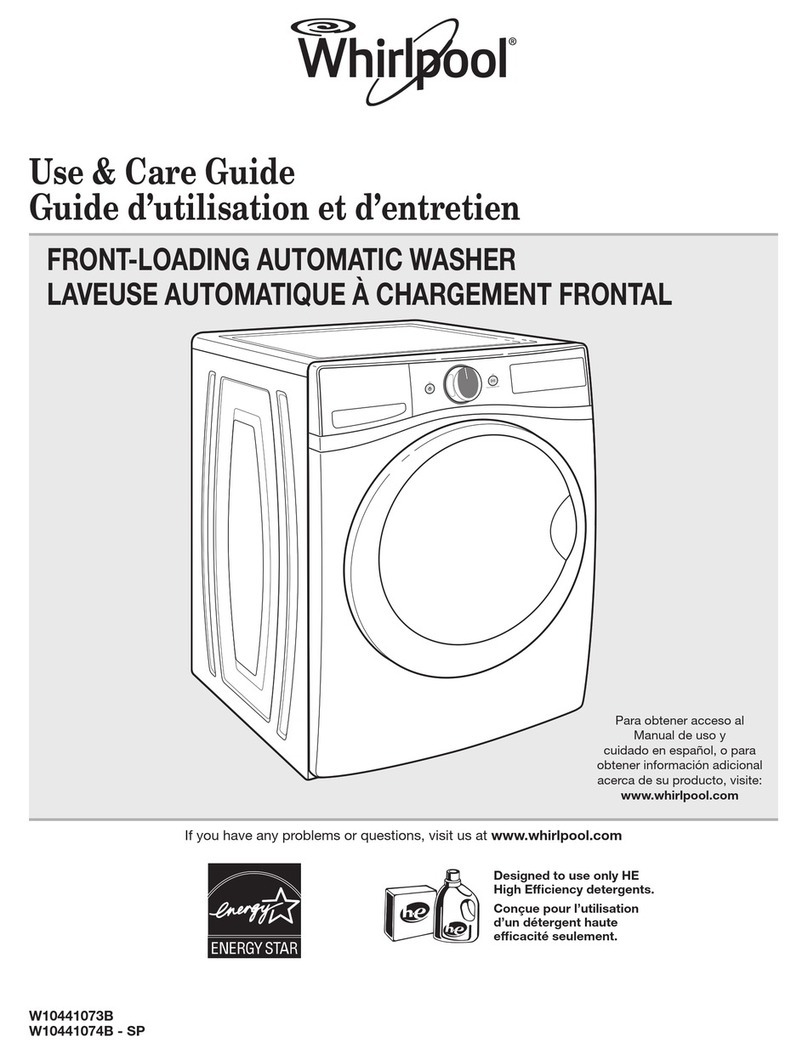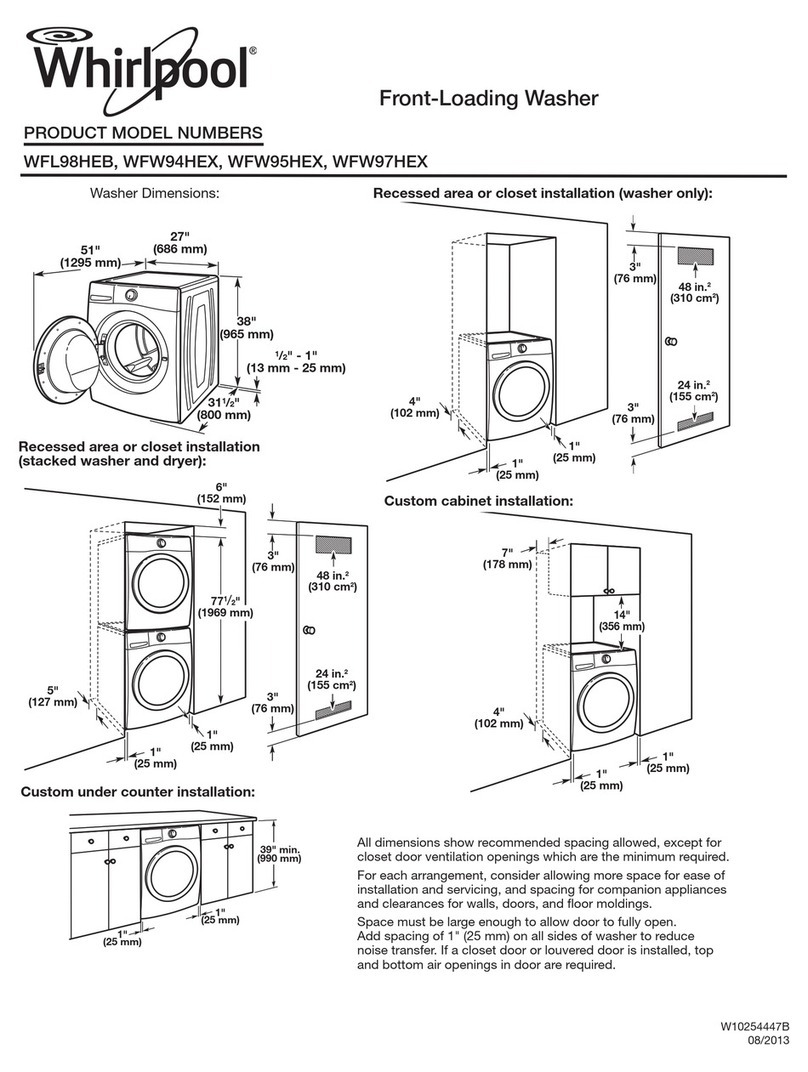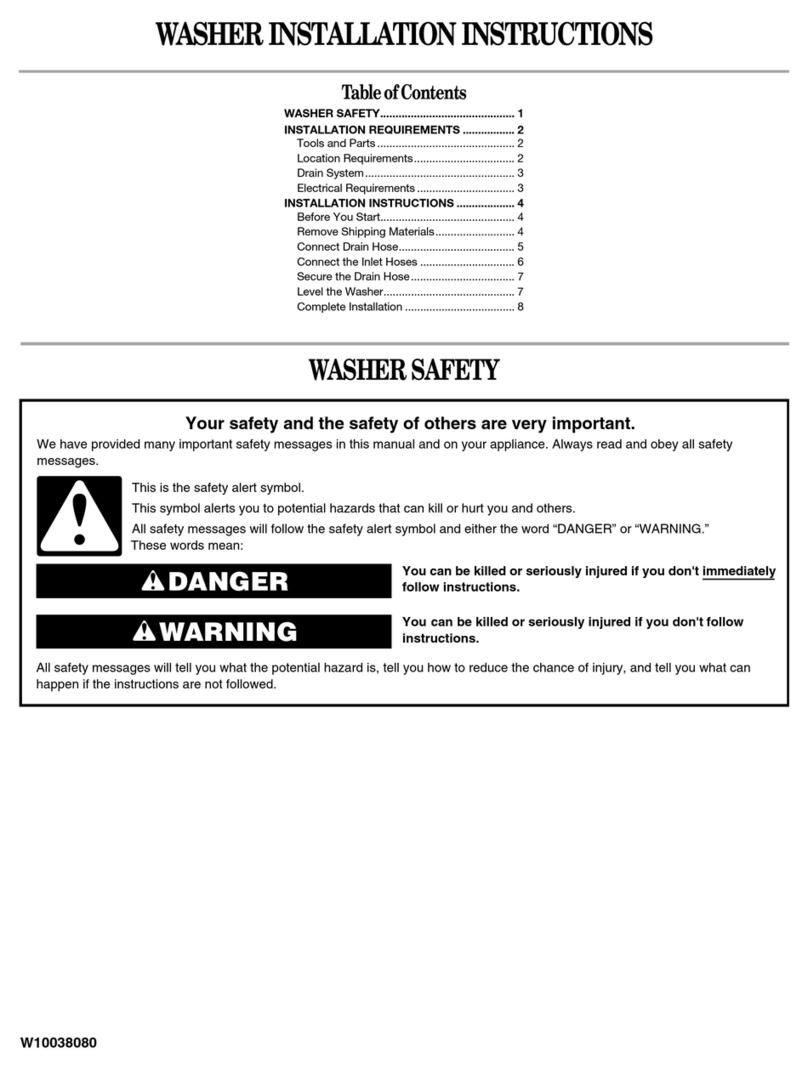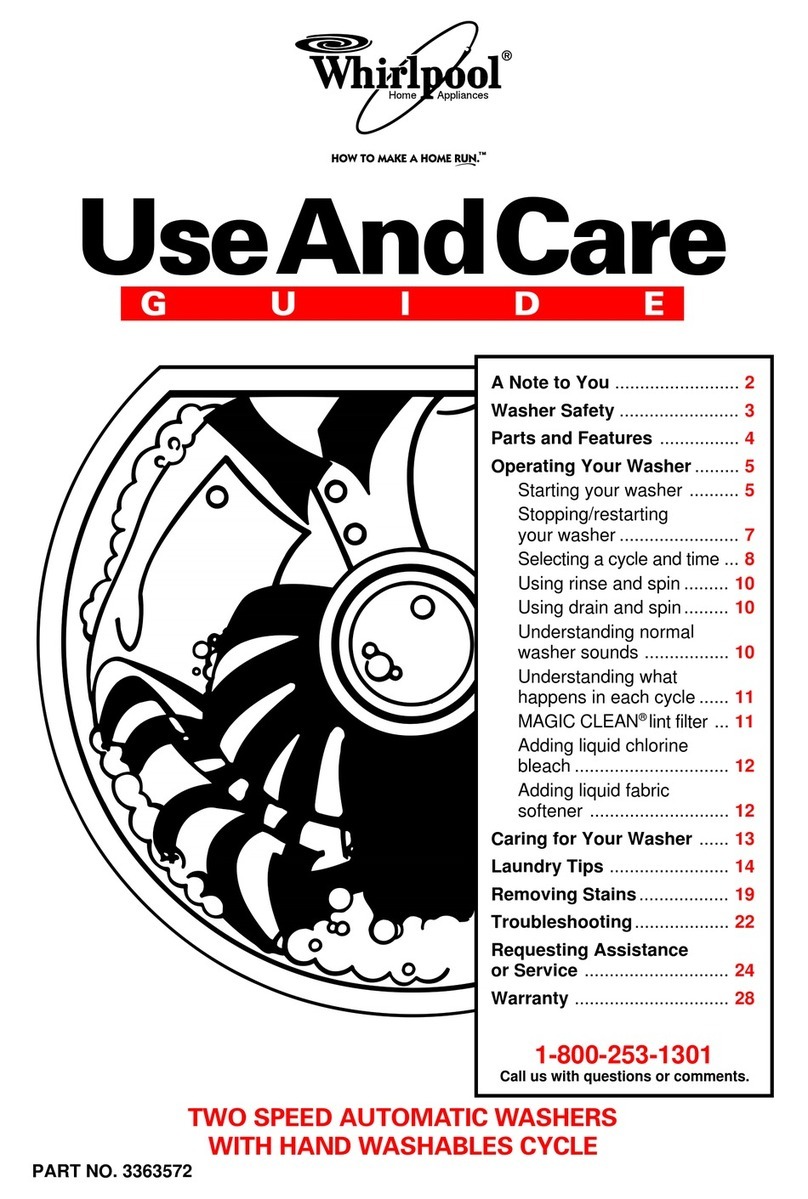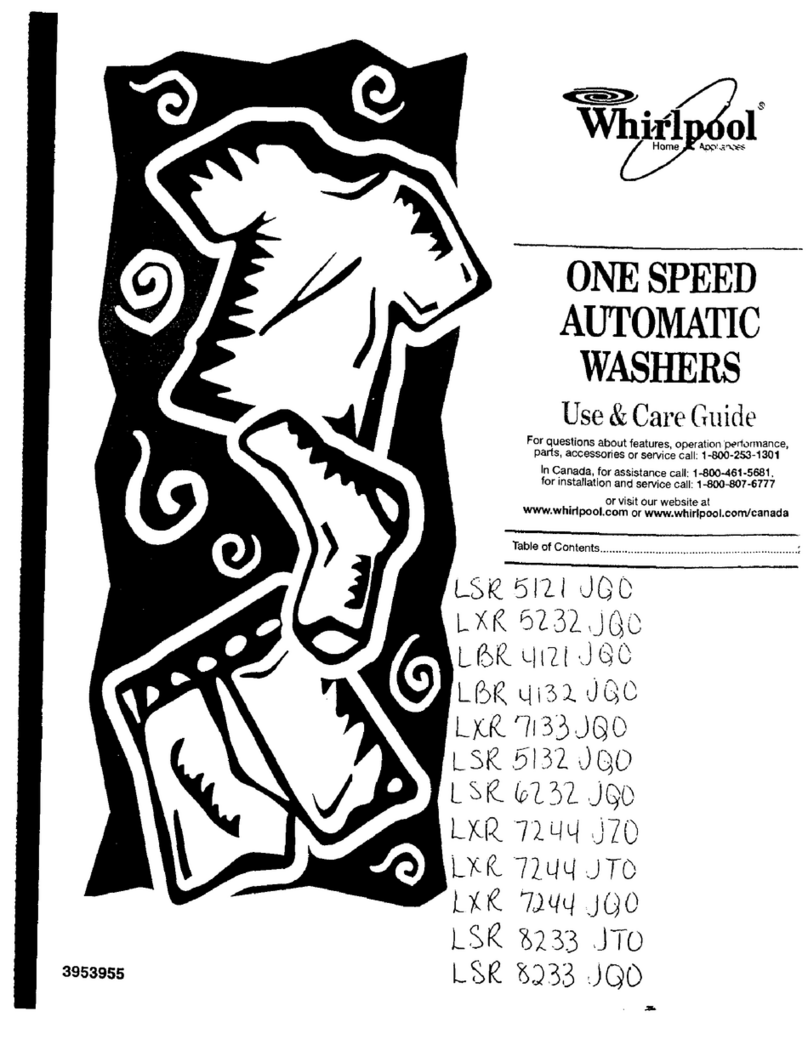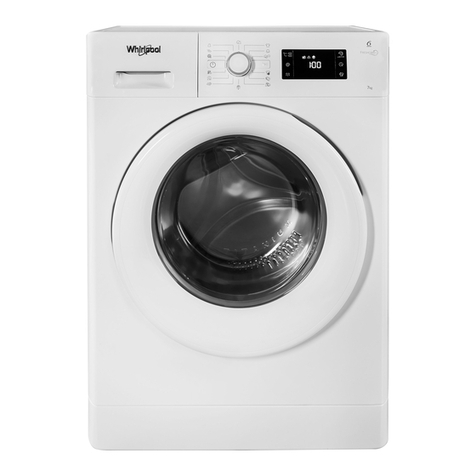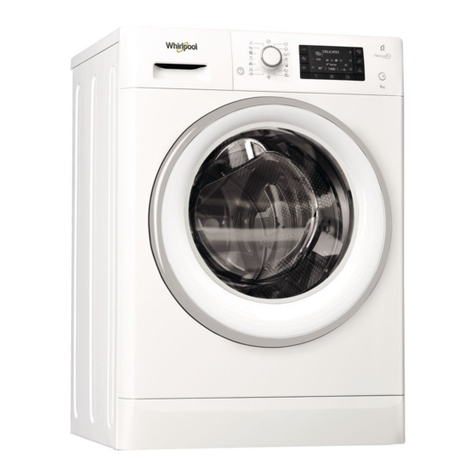Now start... With washer in laundry area.
✔
Panel B
1. Read, then remove label
that covers power supply cord.
4. Insert a flat washer into each
end of the inlet hoses. Check
that washers are firmly seated in
couplings.
Check inlet hoses periodically.
Replace inlet hoses if you find
bulges, kinks, cuts, wear or leaking.
Replace inlet hoses after five years
of use.
3.Pull firmly to remove the
other end of shipping
strap from the back of the
washer to release self-leveling
legs.
Save the shipping strap for use in
Step 17.
2. Pull yellow shipping strap with two cotter pins
entirely out of washer. The power supply cord
will still be attached to shipping strap.
Pull the yellow shipping strap
completely out of the washer.
A
B
Preparation:
Inlet hose
connection:
(to washer)
Use new hoses and washers that came with your washer.
coupling washer
5.Attach one hose to the hot
water (bottom) inlet valve first;
then other hose to the cold water
(top) inlet valve. Tighten couplings
by hand. Then use pliers to make an
additional two-thirds turn.
DO NOT OVERTIGHTEN; this could
cause damage to couplings.
Inlets are plastic.
Do Not strip or
crossthread.
2 cotter pins
shipping
strap
label
hot water
inlet valve
cold water
inlet valve
Remove yellow shipping strap.
SLIDE WASHER ONTO CARDBOARD OR
HARDBOARD BEFORE MOVING ACROSS
FLOOR.
Move washer close to its final
location.
For your personal safety, this washer must be
grounded. This washer is equipped with a
power supply cord having a 3-prong ground
plug.
To minimize possible shock hazard,
the cord must be plugged into a mating, 3-
prong, ground-type outlet, grounded in
accordance with local codes and ordinances.
If a mating outlet is not available, it is the
personal responsibility and obligation of the
customer to have the properly grounded
outlet installed by a qualified electrician.
GROUNDING INSTRUCTIONS
For a grounded, cord-connected washer:
This washer must be grounded. In the event of malfunction or
breakdown, grounding will reduce the risk of electrical shock by
providing a path of least resistance for electric current. This washer is
equipped with a cord having an equipment-grounding conductor and
grounding plug. The plug must be plugged into an appropriate outlet
that is properly installed and grounded in accordance with all local
codes and ordinances.
WARNING: Improper connection of the equipment grounding
conductor can result in a risk of electric shock. Check with a qualified
electrician or serviceman if you are in doubt as to whether the
appliance is properly grounded.
Do not modify the plug provided with the appliance – if it will not fit
the outlet, have a proper outlet installed by a qualified electrician.
For a permanently connected washer:
This washer must be connected to a grounded metal, permanent
wiring system, or an equipment grounding conductor must be run
with the circuit conductors and connected to the equipment-
grounding terminal or lead on the appliance.
If codes permit and a separate
ground wire is used, it is
recommended that a qualified
electrician determine that the
ground path is adequate.
Do Not ground to a gas pipe.
Check with a qualified electrician if
you are not sure the washer is
properly grounded.
Do Not have a fuse in the neutral or
ground circuit.
Electrical requirements
✔
Recommended ground method
power
supply
cord
ground
prong
3-prong
ground
plug
3-prong
ground-
type outlet
A 120-volt, 50-Hz, Ac-only, 15- or
20-ampere, fused electrical supply is
required. Time-delay fuse or circuit
breaker is recommended. It is
recommended that a separate circuit
serving only this appliance be provided.
WARNING
Electrical Shock Hazard
Plug into a grounded 3-prong
outlet.
Do not remove ground prong.
Do not use an adapter.
Do not use an extension cord.
Failure to follow these
instructions can result in
death, fire, or electrical shock.
Excessive Weight Hazard
Use two or more people to move
and install washer.
Failure to do so can result in back
or other injury.
WARNING
